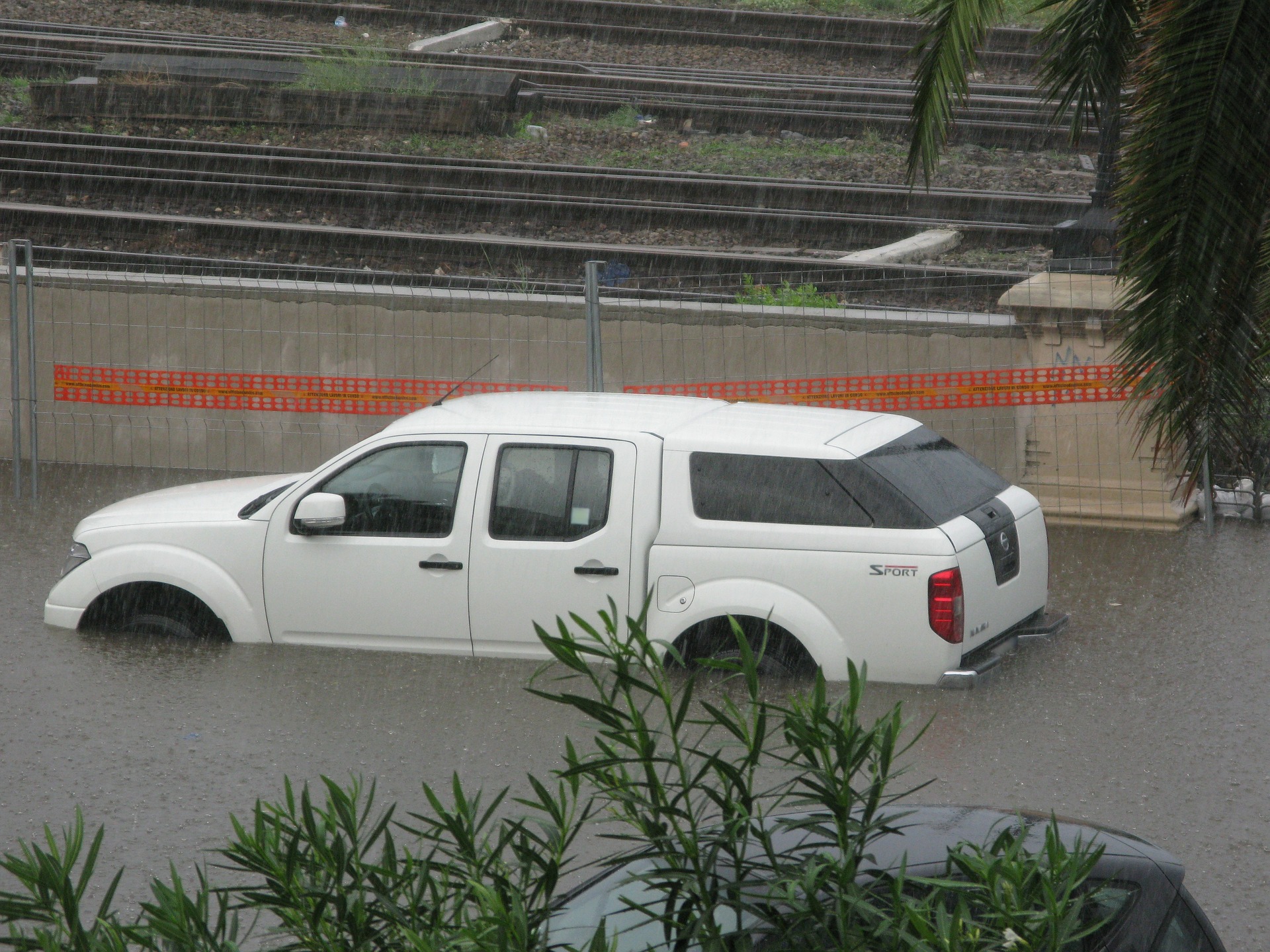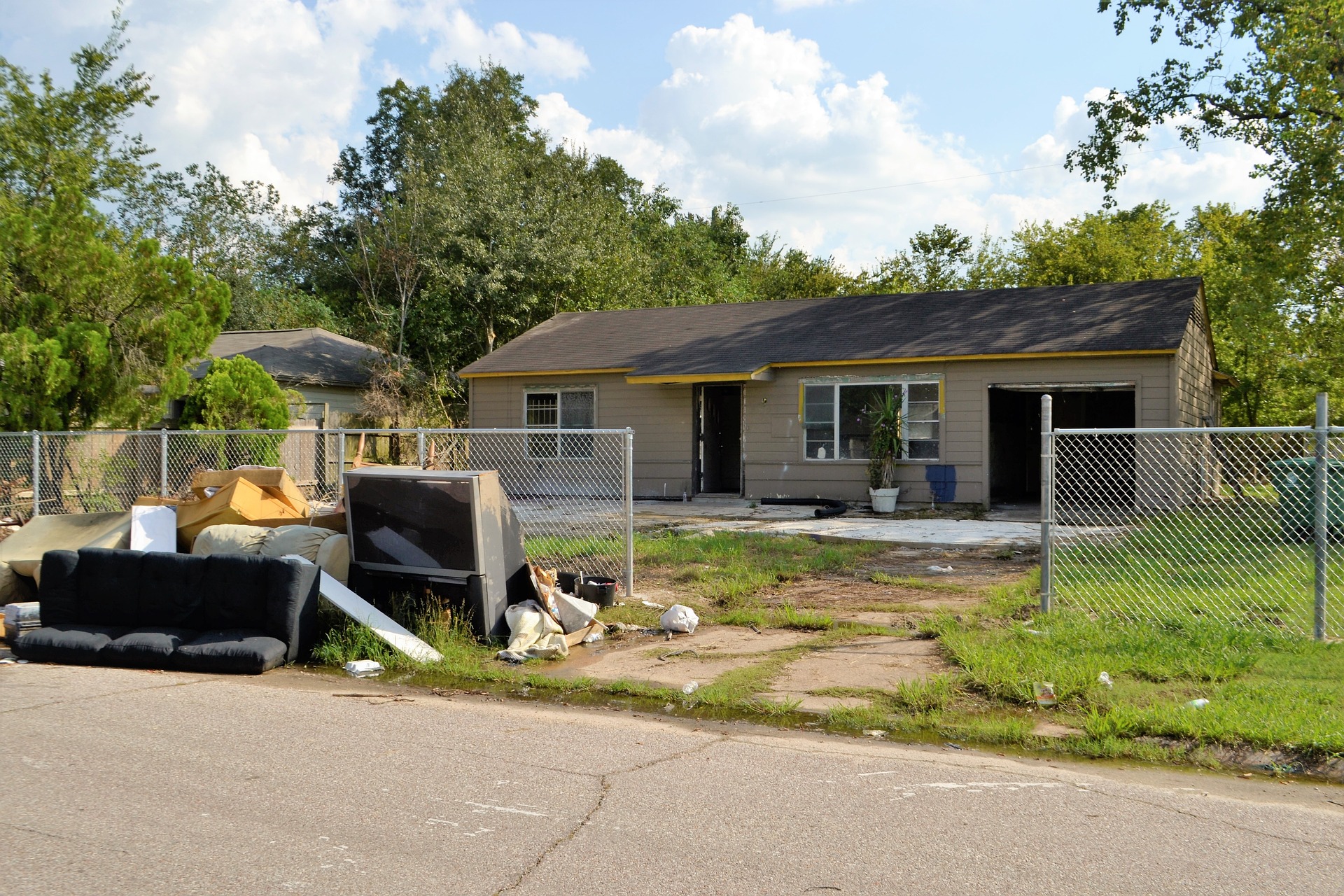In Florida, if you live in a low lying area known as a flood zone chances are you will have to eventually deal with a flood, if you have not already. In Fort Lauderdale, a flood of biblical proportions took place in April and we aren’t even in the rainy season yet. Here are the steps for a DIY Flood Damage Cleanup.
First, contact us at Dumpstermaxx, you will need a roll off dumpster to dispose of furniture and other items that could not be saved. After you have inspected your home and have an idea of how much waste your flood clean out will produce. We can tell you how many roll-off dumpsters you will need to finish cleaning up the flood damage. Waiting on waste services can mean weeks or months of debris in front of your house, providing a home for vermin and a hazard to children. Don’t wait for anyone else, get the trash and debris out of your yard as soon as possible.
Floods can be a devastating natural disaster, causing significant damage to homes and property. If your home has been affected by a flood, it’s essential to act quickly and begin the cleanup process as soon as possible to prevent further damage and mold growth. While it’s always best to hire a professional flood cleanup service, it’s possible to do it yourself with the right equipment and knowledge. Here are some steps to follow for a DIY flood cleanup:
The Cleanup Process
Safety first: Before entering the flooded area, make sure it’s safe to do so. Turn off the power and gas supply to your home to avoid electrocution or fire hazards. Wear protective gear such as rubber boots, gloves, and a mask to prevent exposure to contaminants in the floodwater.
Remove the water: Use a wet/dry vacuum, a sump pump, or a mop and bucket to remove standing water. If you have a lot of water to remove, a sump pump is the most effective tool for the job. Make sure you dispose of the water properly, following local regulations.
Dry out the area: Use fans, dehumidifiers, and open windows and doors to help dry out the affected area. It’s essential to dry everything thoroughly to prevent mold growth.
Clean up: Once the area is dry, you can begin cleaning. Use a disinfectant solution to clean walls, floors, and other surfaces. You may need to remove and discard any items that were damaged beyond repair.
Monitor for mold: Even if you’ve dried everything thoroughly, mold can still grow in hidden areas. Keep an eye out for signs of mold growth, such as a musty smell or discoloration on walls or ceilings. If you suspect mold, it’s best to hire a professional to assess the situation.
Prevent future flooding: Take steps to prevent future flooding, such as installing a sump pump or elevating appliances and electronics off the ground. Make sure your insurance policy covers flood damage, and consider purchasing flood insurance if you live in a high-risk area.
In conclusion
A DIY flood cleanup can be done if you have the right tools and knowledge. However, it’s always best to hire a professional if the damage is extensive or if you’re unsure about the extent of the damage. Remember to prioritize safety, thoroughly dry everything, clean up, monitor for mold, and take steps to prevent future flooding. Contact Dumpstermaxx for rates and availability on our roll-off dumpsters.


